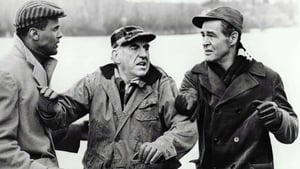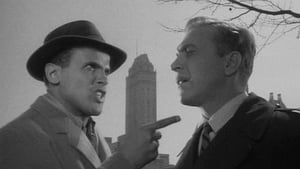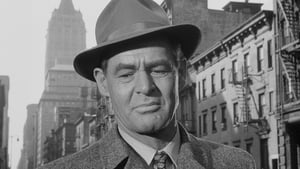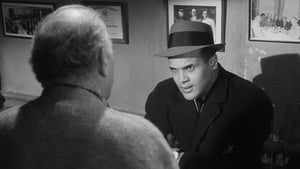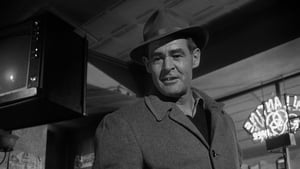Contact: info@alwanfilm.com
Video Sources 0 Views
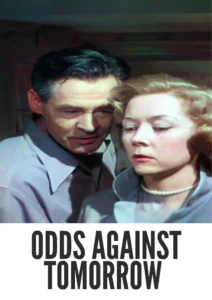
Synopsis
Odds Against Tomorrow 1959 Colorized Review: Rediscovering a Classic

Introduction
In the annals of old movies, there are gems that shine brighter with each passing year. Odds Against Tomorrow (1959) stands tall among them, a noir thriller that not only captivates with its gripping narrative but also resonates with its thematic depth. Now, with the release of an early colored version, viewers have the chance to witness this cinematic masterpiece in a new light. In this article, we delve into the significance of Odds Against Tomorrow (1959)’s early colored version and its impact on the world of cinema.
Check The Full Colorized Movies List
Check Our Colorized Movies Trailer Channel
Understanding Odds Against Tomorrow 1959 Colorized: Director, Cast, and Genre
Directed by Robert Wise, Odds Against Tomorrow (1959) boasts a stellar cast featuring Harry Belafonte, Robert Ryan, and Shelley Winters. Wise’s vision for the film transcends traditional genre boundaries, blending elements of crime drama, social commentary, and character study to create a cinematic experience that lingers in the mind long after the credits roll.
Exploring the World of Odds Against Tomorrow 1959 Colorized: Plot and Characters
Set against the gritty backdrop of New York City, Odds Against Tomorrow (1959) follows the fateful convergence of three men from different walks of life. Johnny Ingram (Harry Belafonte), an African American jazz musician burdened by debt, teams up with disgraced cop Dave Burke (Ed Begley) and embittered ex-convict Earl Slater (Robert Ryan) for a daring bank heist. As tensions mount and personal demons come to the fore, the trio finds themselves ensnared in a web of betrayal, violence, and moral reckoning.
At its heart, Odds Against Tomorrow (1959) is a character-driven narrative that delves into the complexities of race, class, and identity in post-war America. Belafonte’s portrayal of Johnny Ingram is a tour de force, capturing the anguish and resilience of a man caught between desperation and dignity. Ryan delivers a searing performance as the volatile Earl Slater, while Winters shines as his troubled companion, Lorry. Together, the ensemble cast brings depth and authenticity to their respective roles, elevating the film beyond its genre trappings.
The Art of Film Colorization
Film colorization, the process of adding color to black-and-white footage, has been a source of contention in the film industry for decades. While some argue that colorization breathes new life into classic films and makes them more accessible to modern audiences, others believe that it dilutes the artistic integrity of the original work and undermines the director’s vision. The release of Odds Against Tomorrow (1959) in a colorized format offers an opportunity to revisit this debate and explore the impact of colorization on the viewing experience.
Early Colored Films: A Brief History
The history of early colored films is as rich and varied as the hues they portray. From hand-tinted frames to two-strip Technicolor, early colored techniques have played a pivotal role in shaping the visual language of cinema. The decision to colorize Odds Against Tomorrow (1959) reflects a broader trend in the industry towards reimagining classic films for contemporary audiences, while also raising questions about the preservation of cinematic heritage in its original form.
Odds Against Tomorrow 1959 and Its Early Colored Version
The release of Odds Against Tomorrow (1959) in a colorized format marks a departure from its original black-and-white aesthetic. While purists may balk at the change, others welcome the opportunity to experience the film in a new way. Colorization adds depth and dimension to the film’s visual palette, enhancing its atmospheric allure and immersing viewers in the gritty urban landscape of 1950s America. From the neon-lit streets of Harlem to the shadowy interiors of seedy nightclubs, colorization breathes new life into the film, inviting audiences to rediscover its timeless appeal.
The Debate Over Film Colorization
The debate over film colorization is as contentious as ever, with passionate arguments on both sides of the issue. Proponents argue that colorization preserves classic films for future generations and introduces them to new audiences, while opponents contend that it erodes the artistic integrity of the original work and undermines the director’s vision. The release of Odds Against Tomorrow (1959) in a colorized format reignites this debate, prompting audiences to reconsider the value of colorization in the preservation of cinematic heritage.
Examining Odds Against Tomorrow 1959 as an Early Colored Film
As one of the earliest examples of colorization in cinema, Odds Against Tomorrow (1959) offers valuable insights into the evolving relationship between black-and-white and color imagery. While purists may prefer the film in its original monochromatic form, there is no denying the visual impact of its early colored version. Colorization enhances the film’s atmospheric texture and emotional resonance, imbuing its characters and settings with newfound vibrancy and depth. From the warm glow of street lamps to the cold gleam of steel, colorization adds a layer of visual richness to the film, enriching the viewing experience for audiences old and new.
Influence and Legacy: Odds Against Tomorrow 1959 Colorized’s Impact on Cinema
Odds Against Tomorrow (1959) has left an indelible mark on the cinematic landscape, inspiring generations of filmmakers with its bold storytelling and innovative visuals. Wise’s masterful direction and the stellar performances of its cast have earned the film a place in the pantheon of classic cinema. The release of the film in a colorized format further cements its legacy, inviting audiences to revisit its timeless themes and timeless appeal.
Director’s Cinematic Legacy: Beyond Odds Against Tomorrow 1959 Colorized
Robert Wise’s contribution to cinema extends far beyond Odds Against Tomorrow (1959), with a prolific career spanning over six decades. From the groundbreaking musical West Side Story (1961) to the sci-fi epic Star Trek: The Motion Picture (1979), Wise’s films have left an indelible mark on the medium, influencing countless filmmakers and shaping the course of cinematic history.
Themes Explored in Odds Against Tomorrow 1959 Colorized
At its core, Odds Against Tomorrow (1959) is a meditation on the human condition, exploring themes of identity, redemption, and the struggle for self-determination. Set against the backdrop of racial tension and social upheaval, the film confronts the audience with uncomfortable truths about prejudice, privilege, and the corrosive effects of systemic injustice. Through its flawed yet empathetic characters and its unflinching portrayal of urban life, Odds Against Tomorrow (1959) transcends its genre trappings to offer a profound commentary on the human experience.
Reception and Controversy Surrounding Odds Against Tomorrow 1959 Colorized
Upon its release, Odds Against Tomorrow (1959) received widespread critical acclaim for its innovative storytelling and powerful performances. However, the film’s unflinching exploration of race and class relations sparked controversy among audiences and critics alike, with some praising its boldness and others condemning its perceived moral ambiguity. The release of the film in a colorized format reignites this debate, prompting audiences to revisit the film’s themes and reassess its impact on the world of cinema.
Where to Watch Odds Against Tomorrow 1959 Colorized Online
For cinephiles eager to experience the magic of Odds Against Tomorrow (1959), the film is readily available on popular streaming platforms such as Netflix, Amazon Prime, and Hulu. Whether viewed in its original black-and-white format or its early colored version, Odds Against Tomorrow (1959) promises to captivate audiences with its timeless beauty and provocative storytelling.
FAQs About Odds Against Tomorrow 1959 Colorized
- Is Odds Against Tomorrow (1959) based on a true story? No, Odds Against Tomorrow (1959) is a work of fiction, though it draws inspiration from real-life events and experiences.
- Who are the main actors in Odds Against Tomorrow (1959)? The film stars Harry Belafonte as Johnny Ingram, Robert Ryan as Earl Slater, and Shelley Winters as Lorry.
- What is the controversy surrounding the colorization of Odds Against Tomorrow (1959)? Some argue that colorization compromises the director’s original vision and diminishes the artistic integrity of the work, while others see it as a legitimate means of updating classic films for modern audiences.
Conclusion
In conclusion, Odds Against Tomorrow (1959) remains a timeless masterpiece that continues to captivate audiences with its evocative imagery and provocative storytelling. Whether viewed in its original black-and-white format or its early colored version, the film offers a profound meditation on the nature of race, identity, and the human condition. As we continue to debate the merits of film colorization, one thing remains clear: the enduring legacy of Odds Against Tomorrow (1959) will continue to inspire and provoke audiences for generations to come.
